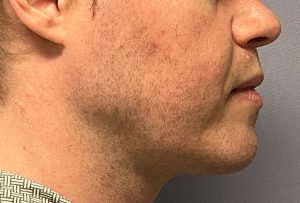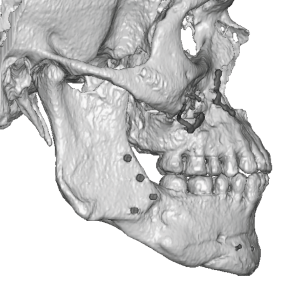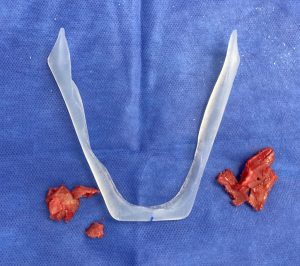Background: There are two basic autologous methods of changing the shape/position of the lower jaw. The sagittal split ramus osteotomy (SSRO) moves the body and symphysis bone while the sliding genioplasty (SG) repositions the symphysis (chin) bone. Both do so by cutting through the entire vertical length of the involved jaw bone done through its inferior border. The inferior border is the thick smooth edge that runs along the entire jawline from side to side that one commonly feels with their hand.
When the bones are moved and put back together in a new position there is always going to be some contour disruption of the inferior border. The only question is how significant will they be. This inferior border disruption is well recognized in the sliding genioplasty procedure and is known as ‘stepoffs’ which, when significant, can be seen externally as soft tissue indentations over them. Less recognized is what can occur with the SRRO procedure in which the shape of the entire jaw angle can change with irregularities or becoming vertically shorter particularly in large Bimax movements.
When a BSSO and a SG are performed together there is a potential for four different locations of disruption of the inferior border of the lower jaw. Smoothing out the jawline after such orthognathic surgery can only be done with a custom jawline implant with the benefits that any other aesthetic dimensional augmentation changes can be done at the same time.





Key Points:
1) All osteotomies of the lower jaw, sagittal split ramus osteotomies and sliding genioplasties, have the potential to leave inferior border jawline irregularities.
2) Custom jawline implants can be used to smooth out the irregular inferior border without creating any significant jaw augmentation effect.
3) Previously placed materials, like Medpor, that have been used to try and smooth out jaw irregularities can be removed with the custom jawline implant placement.
Dr. Barry Eppley
World-Renowned Plastic Surgeon






